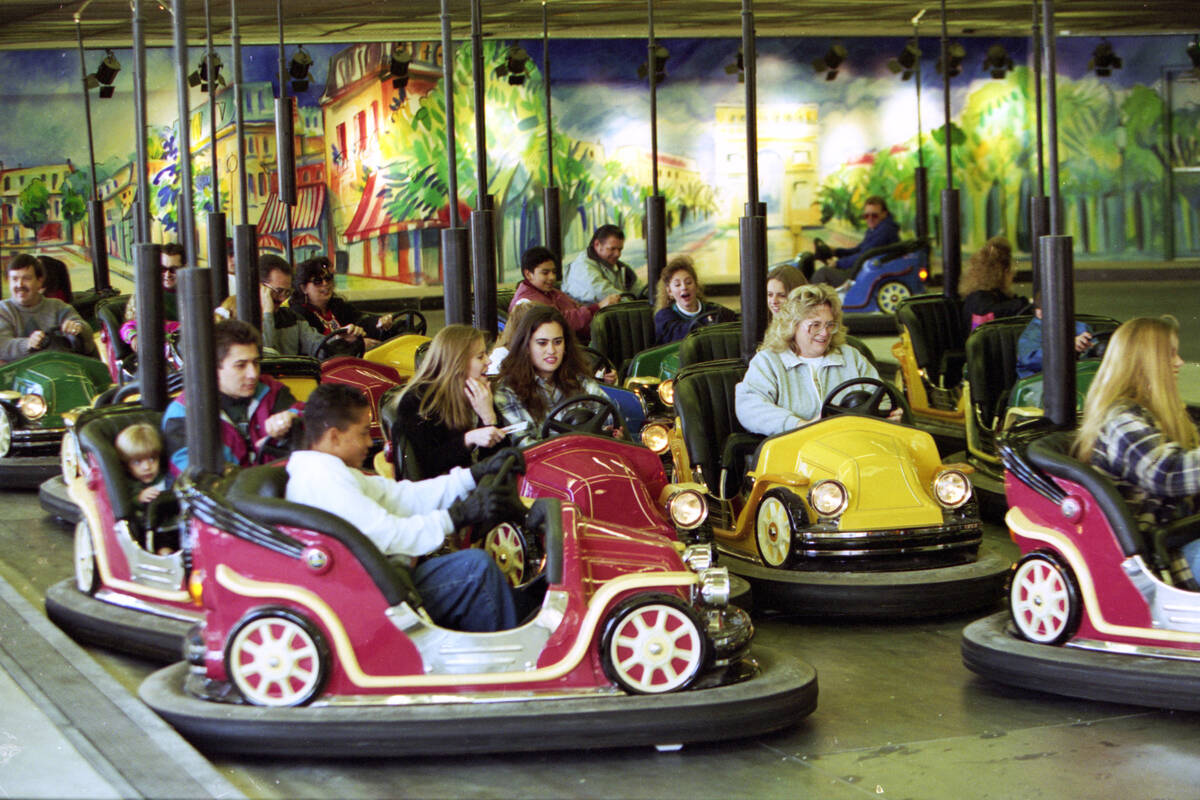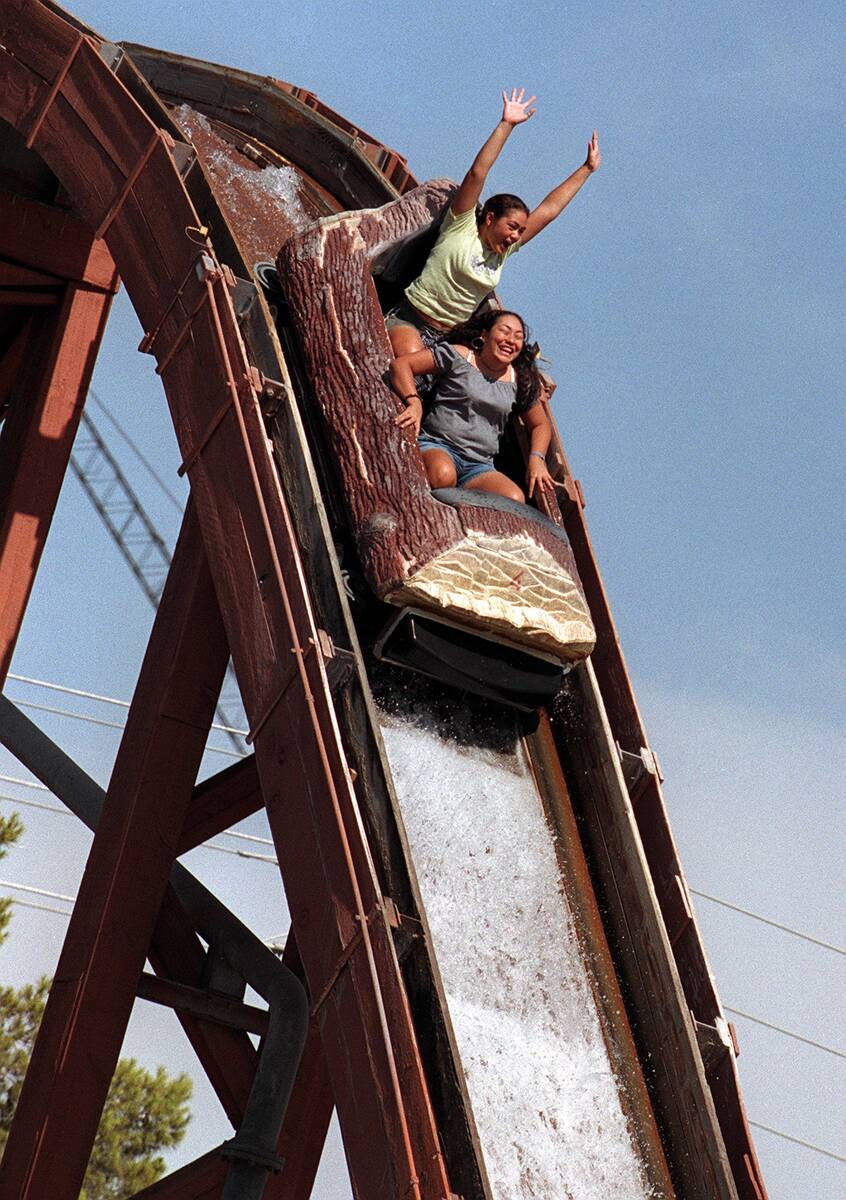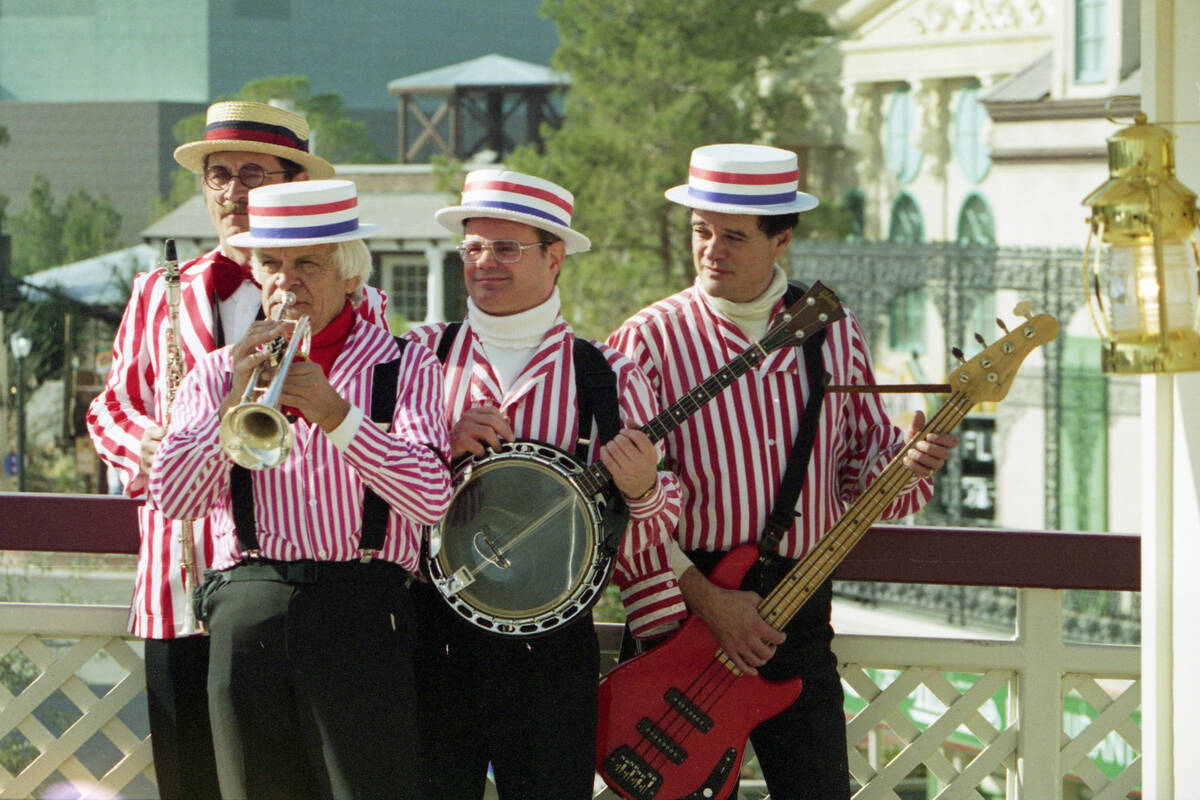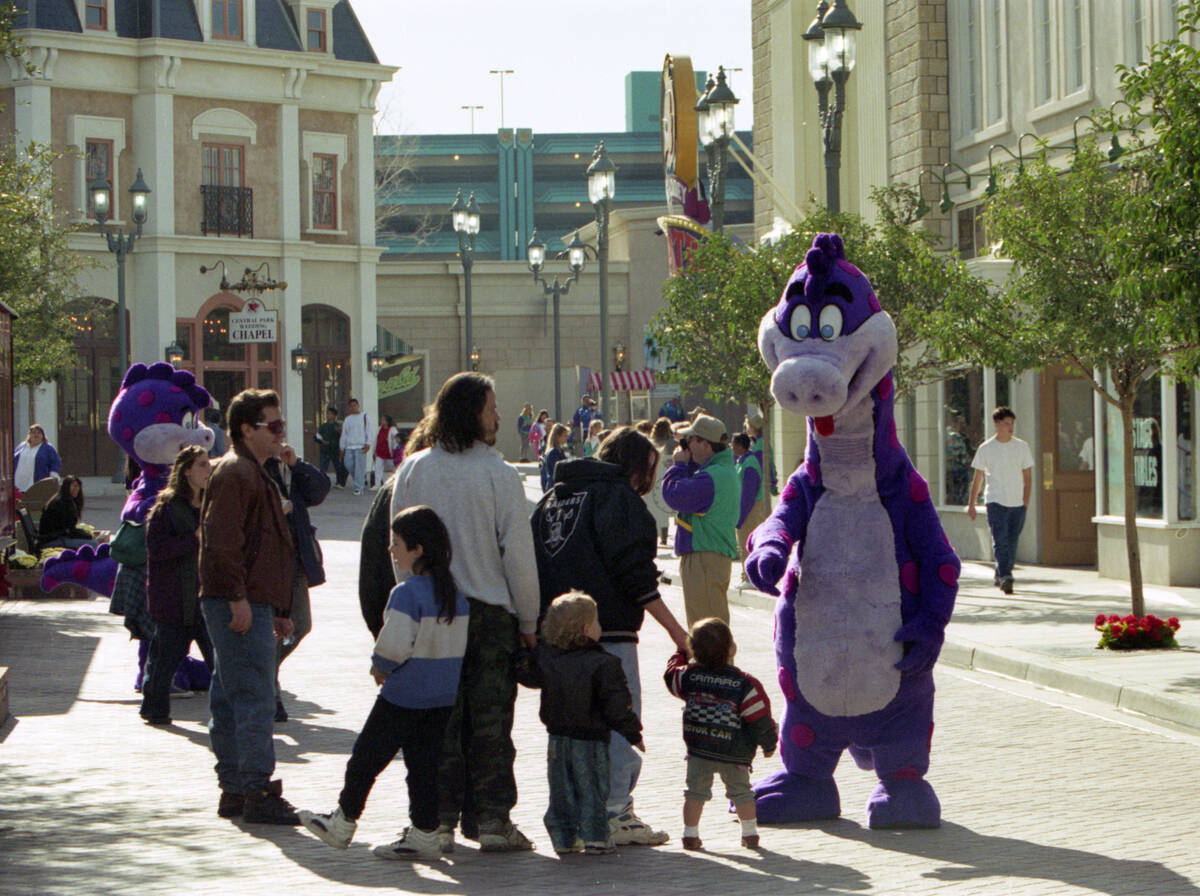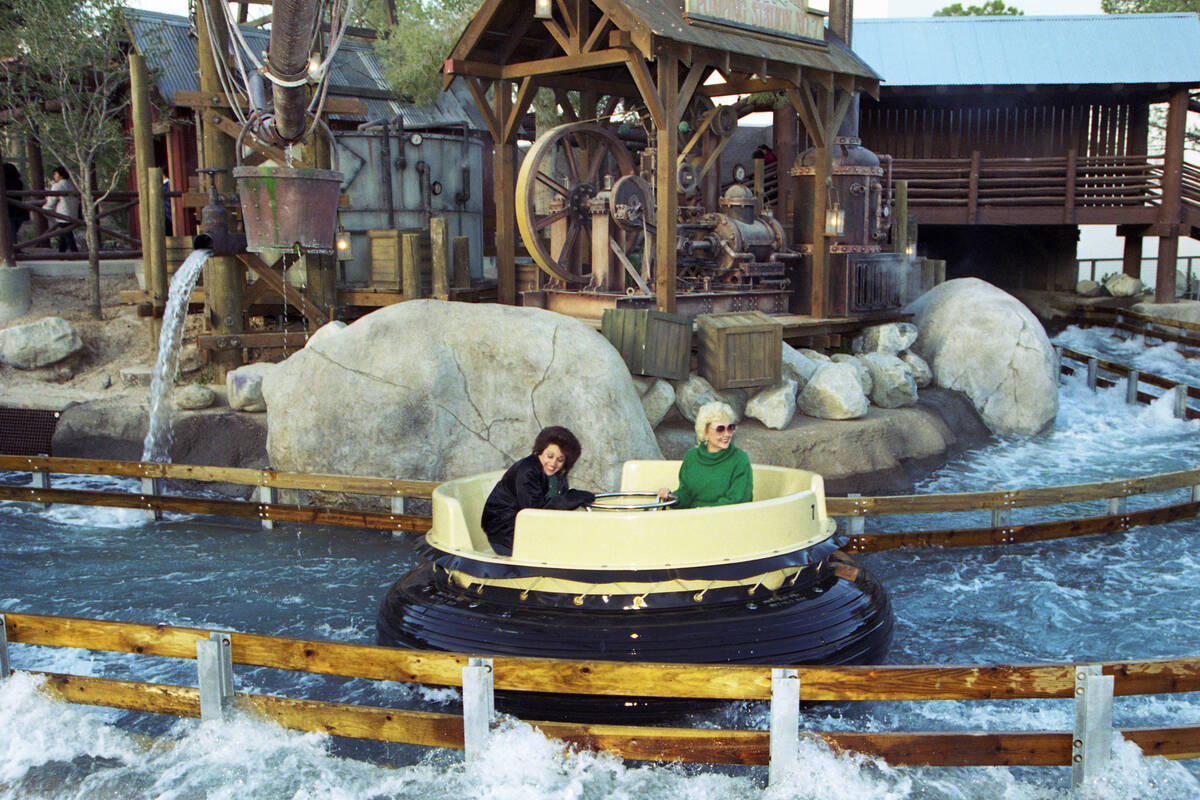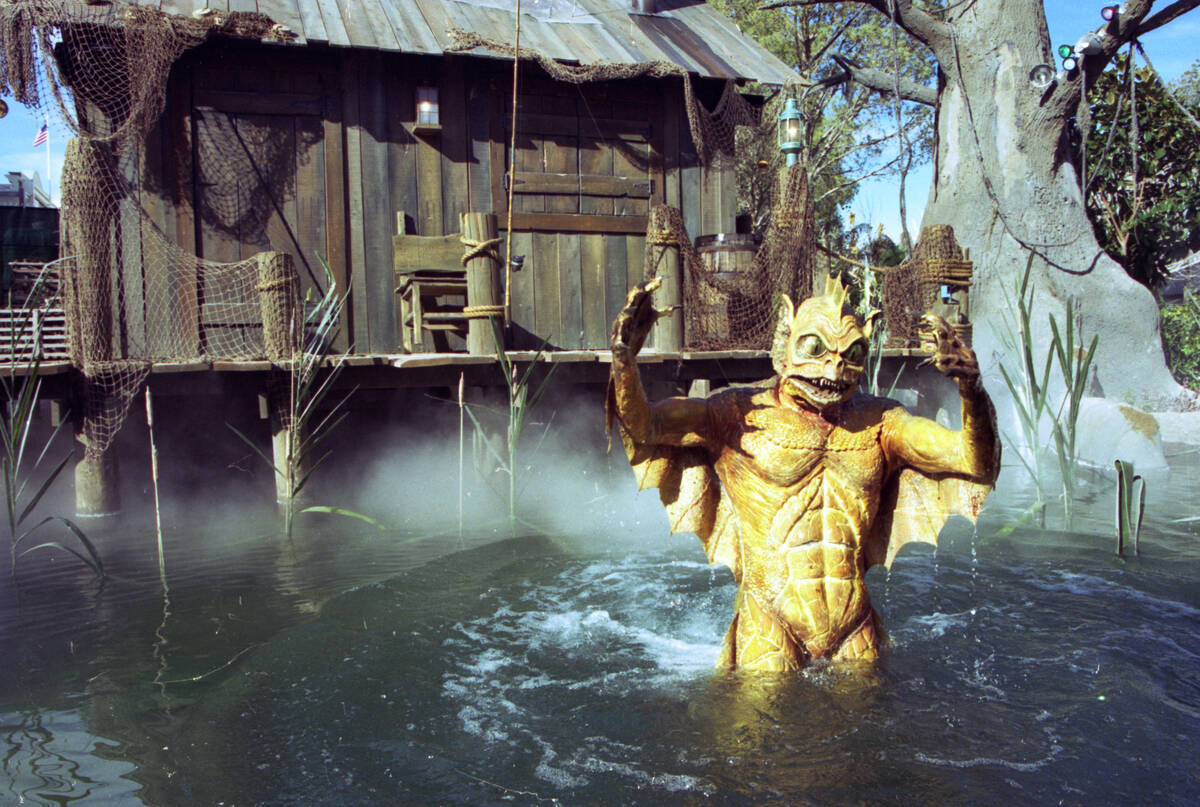MGM Grand Adventures theme park was one of company’s few failures
It’s hard to imagine Las Vegas casino behemoth MGM Resorts International associated with failure.
But the company’s 33-acre MGM Grand Adventures theme park, which first opened Dec. 18, 1993, and closed less than seven years later, has to qualify as one of the city’s historic flops.
When the park opened alongside the 5,000-room megaresort, Las Vegas was declared a new family friendly destination.
Time magazine trumpeted in a cover story the new Las Vegas as a place where people could come with their kids. While some companies embraced a family friendly atmosphere, others resisted.
MGM went all in with its movie-studio-themed attraction, now occupied by The Signature at MGM towers, the three-story MGM Grand Conference Center and Topgolf, the resort’s popular driving range attraction.
Going family friendly
Michael Green, an associate professor at UNLV’s Department of History, said the time seemed right to go family friendly in the early ‘90s because Circus Circus had always been a hit since it opened in 1968, a Circus sister property called Excalibur had opened on the South Strip and the North Strip’s Last Frontier Village was popular with families. Circus Circus was on the verge of opening Grand Slam Canyon, now known as the Adventuredome. Luxor had its now-defunct Nile River attraction through Egyptian relics and families would come out to see pirates and British soldiers duel, concluding with the Brits sinking at Treasure Island.
The United States had elected its first baby-boomer president, Bill Clinton, in November 1992, and people had conversations about whether Bill and Hillary would take daughter Chelsea on trips.
Green believes MGM officials had the land at the resort site and simply decided to try something different with all the sentiment that began swirling around Las Vegas becoming family friendly.
$120 million investment
MGM spent an estimated $120 million to build the park on land northeast of the hotel footprint that once held the Tropicana golf course.
But Las Vegas’ largest outdoor theme park didn’t last a decade.
After seven years, a downsizing and some strategic operational changes, MGM Grand Adventures and its seven rides and four theaters closed.
“The family experiment is a well-documented example of a poorly thought-out strategy,” said Amanda Belarmino, an associate professor at UNLV’s William F. Harrah College of Hospitality.
“Our primary attraction is bringing in adult consumers who can experience all of the magic we have to offer from shows to gaming to dining,” she said. “However, the amusement park failed for a few reasons.”
Competing with California
Some of the biggest reasons for failure were that the rides offered weren’t exciting and that most Las Vegas visitors are from Southern California where theme parks are plentiful and thrills are high. With Disneyland, Knotts Berry Farm and Six Flags Magic Mountain in their own backyard, Southern Californians weren’t anxious to pay for a substandard park experience at MGM Grand Adventures. MGM even tried to appeal to guests by capping daily attendance at 8,000 people, even though capacity was around 16,000, to insure short ride lines. Long lines are consistently complained about at Disneyland.
Belarmino listed three other reasons for the failure.
“First, it was far less profitable than gaming,” she said. “Second, when parents are caring for their children, they will not be able to engage in gaming activities which are more profitable. Third, there were too many bad stories that came out of children being lost or neglected.”
One of those bad stories occurred in May 1997 when 7-year-old Sherrice Iverson was sexually assaulted and murdered in a restroom at a Primm casino resort. Her murderer, California resident Jeremy Strohmeyer, is behind bars at High Desert State Prison with a life sentence without parole. Authorities investigated the case as child neglect after Strohmeyer kidnapped her while her adult supervisors gambled in the casino.
Green is convinced the Strohmeyer case had a role in the end of the family-friendly-Vegas era and the “Las Vegasing of America.”
“I don’t know whether the concept failed or MGM just decided to move on,” he said.
Post-park success
He noted that the MGM Grand Conference Center is highly successful, that The Signature caters to high-end players and that Top Golf spawned a multitude of golf-oriented attractions in Southern Nevada, including the just-opened 21-and-older Swingers Crazy Golf attraction at MGM’s Mandalay Bay.
While Belarmino views Southern Nevada’s family-friendly era as a failure on the tourism front, there’s room in Las Vegas for more family-oriented space, especially with the growth of the city, she said.
“With the increase in population in the last 25 years, these attractions would not have to rely solely on visitors,” she said. “I think that a non-gaming resort with family attractions would have the potential to do well, but the location would be key. Perhaps near the new baseball stadium or in the suburban areas would be more successful.
“However, it would be unlikely that we would be able to compete with the amusement parks in Southern California as a destination, so it would have to be carefully planned and designed to help attract locals,” she said.
Contact Richard N. Velotta at rvelotta@reviewjournal.com or 702-477-3893. Follow @RickVelotta on X.
The MGM Grand Adventures Lineup
Backlot River Tour. A 15-minute boat ride took riders through simulated film sets, including a jungle and an American Civil War zone.
Deep Earth Exploration. One of the park's best attractions, because the motion technology was new, it was a motion simulator ride that opened a year after MGM Grand Adventures first opened. Set on a 352-foot track, it simulated a journey to the center of the Earth.
The Haunted Mine. Passengers boarded ore cars on a trip through a simulated abandoned mining operation.
Grand Canyon Rapids. One of the most popular rides, particularly on hot summer days, it was a white water rapids raft ride peppered with special effects, including an Old West gunfight and a tunnel explosion. And riders got plenty wet.
Lightning Bolt. An indoor space-themed roller coaster with a top speed of 35 mph. Park officials tried to raise the thrill level by moving the ride outdoors and doubling the length of the track to 2,400 feet from the original ride. The ride's manufacturer classified it as a "family coaster," but with a height of 70 feet, it simply didn't match up to a more thrilling roller coaster, Desperado, built by the same company in Primm that had a first hill more than 200 feet high with speeds of up to 70 mph.
Over the Edge. Another wet ride, a log flume journey through an old sawmill with two drops of 25 feet and 40 feet and a top speed of 25 mph.
Parisian Taxis. A classic bumper-car ride with a setting of the streets of Paris.
SkyScreamer. Easily the most thrilling ride at the park, the SkyScreamer debuted nearly three years after the park originally opened. Riders strapped in harnesses were hoisted 220 feet in the air to a launch tower where they pulled a ripcord to begin a 100-foot free fall with speeds of up to 70 mph. The ride eventually was moved to Florida.
Park theaters. Several theaters dotted the park. The 950-seat outdoor Pirates Cove had a pirate ship and lagoon and hosted a pirate stunt show. The 750-seat indoor Magic Screen Theatre had a special-effects musical review called "Kaleidoscope" and a live re-creation of the Three Stooges. Also used as a television production studio, it briefly hosted Penn & Teller's "Sin City Spectacular," Donnie and Marie Osmond, and a talent search program hosted by Ed McMahon. The indoor King Looey Theatre, named for the park's mascot and later renamed the Manhattan Theatre, hosted an ice-skating show. And, the 650-seat indoor You're in the Movies (later called Gold Rush Theatre) allowed participants to re-enact scenes from classic films and television shows.



